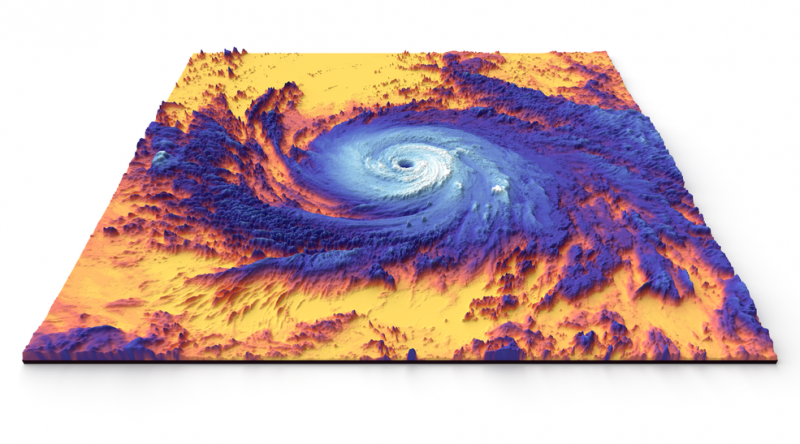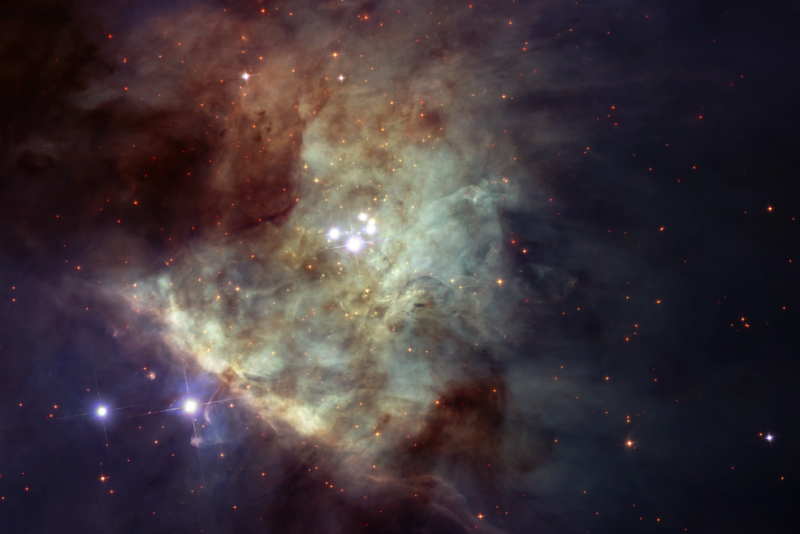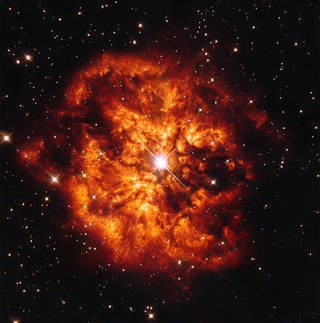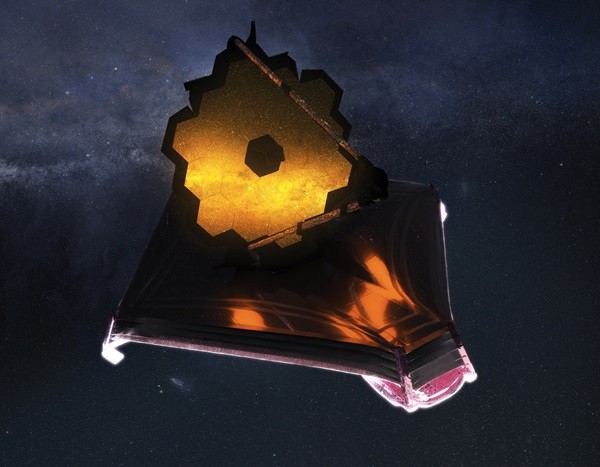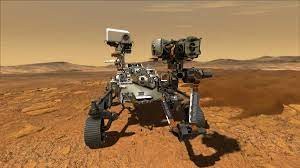News
NASA’s Roman Mission to Probe Cosmic Secrets Using Exploding Stars
Friday, May 28th 2021 04:50 PM
NASA’s Roman Mission to Probe Cosmic Secrets Using Exploding Stars
NASA’s upcoming Nancy Grace Roman Space Telescope will see thousands of exploding stars called supernovae across vast stretches of time and space. Using these observations, astronomers aim to shine a light on several cosmic mysteries, providing a window onto the universe’s distant past and hazy present.
Roman’s supernova survey will help clear up clashing measurements of how fast the universe is currently expanding, and even provide a new way to probe the distribution of dark matter, which is detectable only through its gravitational effects. One of the mission’s primary science goals involves using supernovae to help pin down the nature of dark energy – the unexplained cosmic pressure that’s speeding up the expansion of the universe.
Space’s biggest mystery
“Dark energy makes up the majority of the cosmos, but we don’t actually know what it is,” said...
Read More
Read More
Snapshot: Evidence of recent explosive volcanism on Mars
Wednesday, May 26th 2021 05:02 PM
Snapshot: Evidence of recent explosive volcanism on Mars
The search for life on Mars continues. But rather than hunting for modern life, Perseverance, NASA’s latest Mars rover, will soon begin looking for signs of ancient life having once existed on the now dry, barren world. And though most researchers agree the surface of Mars is no longer hospitable, some suspect life could stand a fighting chance underground.
A new paper adds weight to that theory.
The study, led by research scientist David Horvath of the Planetary Science Institute, reevaluates how long ago the Red Planet’s volcanoes were active. It’s currently believed that most eruptions occurred between 3 billion and 4 billion years ago. There’s also evidence suggesting Mars’ youngest volcanoes were active about 3 million years ago. Now, new data from satellites orbiting Mars indicate volcanoes continued to rage on Mars until the much more recent past — a mere 50,000 years ago.
El...
Read More
Read More
New NASA Earth System Observatory to Help Address, Mitigate Climate Change
Tuesday, May 25th 2021 05:05 PM
New NASA Earth System Observatory to Help Address, Mitigate Climate Change
NASA’s new Earth System Observatory will guide efforts related to climate change, disaster mitigation, fighting forest fires, and improving real-time agricultural processes – including helping to better understand Category 4 to 5 hurricanes such as Hurricane Maria, shown here in a 2017 thermal image captured by NASA’s Terra satellite.
With the Earth System Observatory, each satellite will be uniquely designed to complement the others, working in tandem to create a 3D, holistic view of Earth, from bedrock to atmosphere.
“I’ve seen firsthand the impact of hurricanes made more intense and destructive by climate change, like Maria and Irma. The Biden-Harris Administration’s response to climate change matches the magnitude of the threat: a whole of government, all hands-on-deck approach to meet this moment,” said NASA Administrator Sen. Bill Nelson. “Over the...
Read More
Read More
NASA's Webb to Study How Massive Stars' Blasts of Radiation Influence Their Environments
Monday, May 24th 2021 04:34 PM
NASA's Webb to Study How Massive Stars' Blasts of Radiation Influence Their Environments
In a nearby stellar nursery called the Orion Nebula, young, massive stars are blasting far-ultraviolet light at the cloud of dust and gas from which they were born. This intense flood of radiation is violently disrupting the cloud by breaking apart molecules, ionizing atoms and molecules by stripping their electrons, and heating the gas and dust. An international team using NASA's James Webb Space Telescope, which is scheduled to launch in October, will study a portion of the radiated cloud called the Orion Bar to learn more about the influence massive stars have on their environments, and even on the formation of our own solar system.
The Orion Bar is a diagonal, ridge-like feature of gas and dust in the lower left quadrant of this image of the Orion Nebula. Sculpted by the intense radiation from nearby hot, young stars, the Orion Bar at first glance appears to be shaped like a bar. It i...
Read More
Read More
NASA Rover to Search for Water, Other Resources on Moon
Friday, May 21st 2021 06:02 PM
NASA Rover to Search for Water, Other Resources on Moon
As part of the Artemis program, NASA is planning to send its first mobile robot to the Moon in late 2023 in search of ice and other resources on and below the lunar surface. Data from the Volatiles Investigating Polar Exploration Rover, or VIPER, would help the agency map resources at the lunar South Pole that could one day be harvested for long-term human exploration at the Moon.
VIPER’s design calls for using the first headlights on a lunar rover to aid in exploring the permanently shadowed regions of the Moon. These areas haven’t seen sunlight in billions of years and are some of the coldest spots in the solar system. Running on solar power, VIPER will need to quickly maneuver around the extreme swings in light and dark at the lunar South Pole.
“The data received from VIPER has the potential to aid our scientists in determining precise locations and concentrations of ice on the Moon and will help us evalu...
Read More
Read More
NASA’s New Hubble Focus E-Book Provides a Front Row Seat to a Sky Full of Stars
Thursday, May 20th 2021 04:33 PM
NASA’s New Hubble Focus E-Book Provides a Front Row Seat to a Sky Full of Stars
NASA’s Hubble Space Telescope team has released a new edition in the Hubble Focus e-book series called “Hubble Focus: The Lives of Stars.” This e-book highlights the mission’s recent discoveries and observations related to the birth, evolution, and death of stars.
“Hubble has scoured the skies for more than 30 years, revealing untold celestial wonders,” said Jennifer Wiseman, senior project scientist for the Hubble Space Telescope. “In this new e-book, readers are transported across space and time to take a closer look at the stunning and chaotic processes stars undergo.”
Like brilliant diamonds against the inky void of space, each twinkling star is a radiant cosmic wonder. Many stars grace the galaxy for billions and billions of years, leading tame and rather uneventful lives. Hubble has even spotted some that are nearly as old as the universe itse...
Read More
Read More
James Webb Space Telescope launch delay “likely"
Wednesday, May 19th 2021 04:47 PM
James Webb Space Telescope launch delay “likely,” says government report
For once, the delay isn’t due to a problem with the telescope — but with the Ariane 5 rocket it’s scheduled to fly on.
An Ariane 5 rocket lifts off from French Guiana on September 25, 2018, carrying two telecom satellites into space
NASA officials have acknowledged that the scheduled October launch of the James Webb Space Telescope (JWST) could be pushed back yet again, according to a report from the Government Accountability Office (GAO) released May 13. But this time, the issue isn’t with the telescope.
Instead, it's with the usually reliable, European-produced Ariane 5 rocket, which is slated to carry JWST aloft on October 31 from Kourou, French Guiana. “According to NASA project officials, the JWST launch date will likely be delayed beyond October 2021 due to anomalies discovered in the JWST launch vehicle,” says the report.
The issue lies with the Ariane...
Read More
Read More
Success! NASA’s Perseverance rover has just landed on Mars
Tuesday, May 18th 2021 06:28 PM
Success! NASA’s Perseverance rover has just landed on Mars
After a harrowing plunge through the thin Martian atmosphere, the robotic explorer ‘Percy’ can begin its landmark hunt for signs of ancient life
It’s wheels down for the newest robot to inhabit Mars. Just before 4 p.m. eastern time, the hulking, multibillion-dollar NASA rover Perseverance landed safely on the red planet after a 300-million-mile journey and a nerve-racking plunge to the Martian surface.
"Touchdown confirmed. Perseverance is safely on the surface of Mars," said Swati Mohan, an engineer on the Perseverance team.
The one-ton, nuclear-powered Perseverance made a swift, acrobatic descent through the thin Martian atmosphere that, if all went well, has been captured on video for the first time. The rover autonomously timed its movements so that it would alight within a roughly four-mile-wide landing ellipse in Mars’s Jezero Crater, which once hosted a deep and potentially long-live...
Read More
Read More
New NASA Data Sheds (Sun) Light on Climate Models
Monday, May 17th 2021 04:44 PM
New NASA Data Sheds (Sun) Light on Climate Models
Have you ever worn a dark T-shirt on a sunny day and felt the fabric warm in the Sun’s rays? Most of us know dark colors absorb sunlight and light colors reflect it – but did you know this doesn’t work the same way in the Sun’s non-visible wavelengths?
The Sun is Earth’s power source, and it emits energy as visible sunlight, ultraviolet radiation (shorter wavelengths), and near-infrared radiation, which we feel as heat (longer wavelengths). Visible light reflects off light-colored surfaces like snow and ice, while darker surfaces like forests or oceans absorb it. This reflectivity, called albedo, is one key way Earth regulates its temperature – if Earth absorbs more energy than it reflects, it gets warmer, and if it reflects more than it absorbs, it gets cooler.
The picture becomes more complicated when scientists bring the other wavelengths into the mix. In the near-infrared part of the spectrum...
Read More
Read More
NASA Invests $105 Million in US Small Business Technology Development
Friday, May 14th 2021 04:46 PM
NASA Invests $105 Million in US Small Business Technology Development
NASA has a long history of supporting America’s entrepreneurs as they develop technologies from ideas to commercial readiness. The agency’s Small Business Innovation Research (SBIR) program is furthering that legacy with 140 new Phase II awards to 127 U.S. small businesses that will help them move their innovations to market.
The awards to these small businesses, located across 34 states and Washington, D.C., total $105 million. NASA’s small business program is dedicated to finding the most useful technologies for the agency and the commercial marketplace, and sourcing those innovations from a diverse group of entrepreneurs with different backgrounds and perspectives. The companies chosen for Phase II funding include 33 women-owned, minority-owned, and veteran-owned small businesses.
The awardees all received initial SBIR Phase I contracts in 2020 to demonstrate the merits of their innovations...
Read More
Read More


